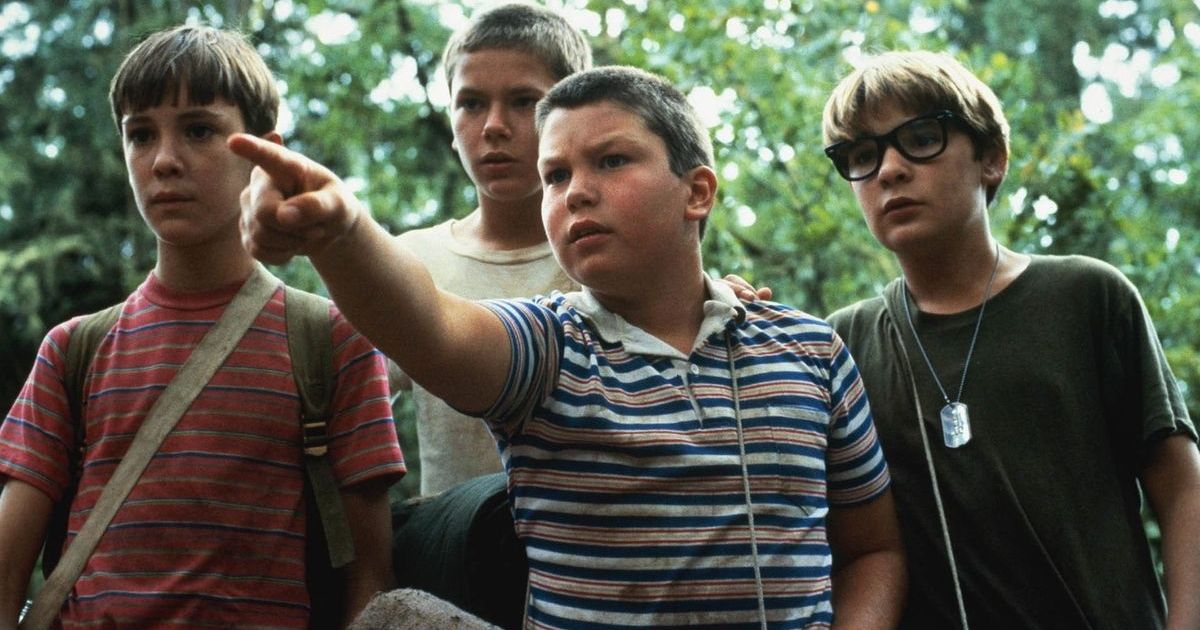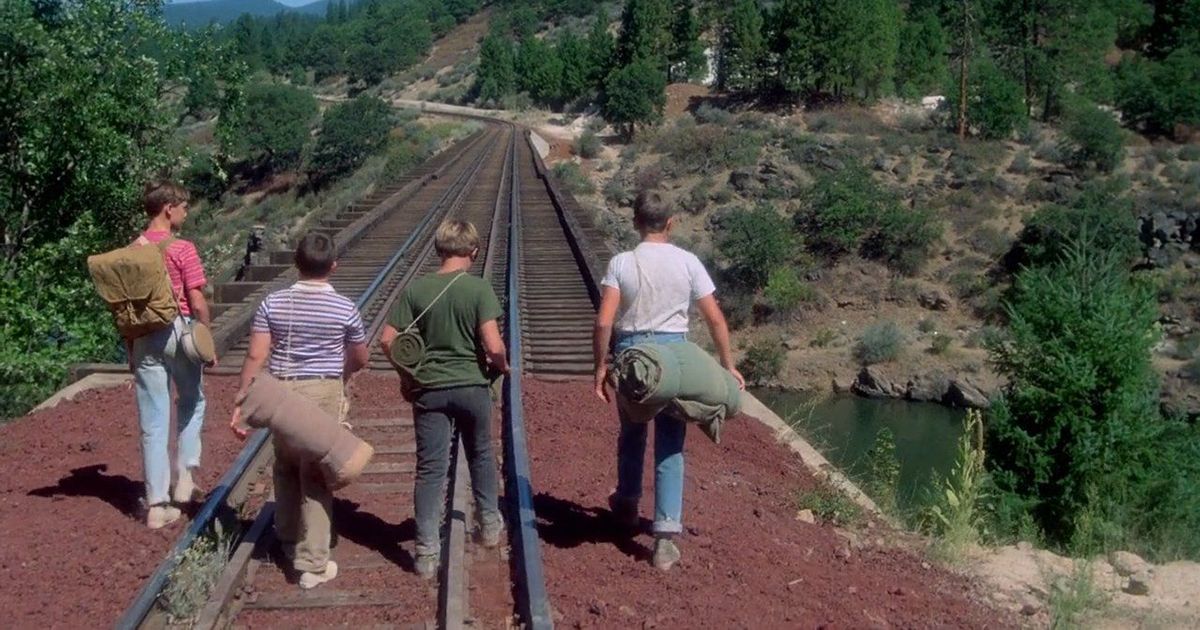Known as a literary master of horror, Stephen King has had more than 50 adaptations based on his novels, novellas, and short stories. One of these adaptations is Stand by Me, which is based on a novella titled The Body, from his book of novellas, Different Seasons. Stand by Me was released in 1986, was directed by Rob Reiner (The Princess Bride, When Harry Met Sally), and starred Wil Wheaton, River Phoenix, Jerry O'Connell, Corey Feldman, and Kiefer Sutherland. The story was narrated by Richard Dreyfuss. Though many of the films and shows based on King's work have received accolades and even Oscar nominations (though only one win, for Kathy Bates' performance in Misery), Stand by Me sticks out as one of the most memorable.
The story of Stand by Me follows four friends that take a two-day journey in hopes of discovering the body of a boy that was hit by a train. So, could a non-horror story written by the world's most prolific horror writer be his best adaptation? Here's why we think so:
A Brilliant Narrative
One thing that sets Stand by Me apart from other King adaptations is its unique storytelling aspect. Bringing in a massively popular actor at the time to narrate and bookend the story, was a genius move by Reiner. Richard Dreyfuss, who was a major star in several Steven Spielberg films (Jaws, Close Encounters of the Third Kind, Always), had a captivating voice, and was able to weave through the emotional aspects of the story with ease. Dreyfuss fully encompassed the older, professional writer version of Gordie LeChance, and while the harder moments in his past could be heard in his voice while he reminisced, Dreyfuss was able to brilliantly bring forth the hope and positivity that came from those moments. It was storytelling at its finest.
Gorgeous Cinematography
Rob Reiner is one of the best and most under-appreciated directors in Hollywood history. With the help of a seasoned cinematographer in Thomas Del Ruth (The Graduate,The West Wing), and the absolutely gorgeous environmental setting of Burney, California, Reiner was able to transport the audience into every single area that our four main characters entered. Individual settings were so distinct from one another, yet blended into one another perfectly, as they were all part of the same 10-20-mile area. This was helped by the incredible attention to detail in the set design, not only making the area feel like it was straight out of 1960, but also choosing locations that the audience may have had similar experiences with, like camping in the woods, hanging out with friends at the local junkyard, or following the railroad tracks together. Camera magic was used to immerse the audience even more. For example, in the scene where the boys are running from the train, the train was actually at the opposite end of the bridge. A 600mm long-focus lens was used to make the train look as though it was bearing down on them, adding to the film's intensity.
Incredibly Developed Characters
One of Stephen King's major strengths as a writer is his incredible talent for character description and development. This also happens to be one of the things that King's adaptations often struggle with. While some films based on his stories dramatically change the source material's characters (Ben Richards in The Running Man), or the story all-together (The Shining), Stand by Me does a wonderful job of capturing its characters' personas from the original story. Each character has a very personal story within the overarching tale of the movie, for which they show some vulnerability about, to one another.
Not only is Gordie (Wheaton) grieving the loss of his older brother and role model, but also trying to maneuver around the grief and harshness of his parents. Chris (Phoenix) is seen as the town's troublemaker because of who his brother is, and takes it to heart when everyone judges him, regardless of whether he's trying to be a good person or not. Vern (O'Connell) is consistently bullied for his fears, and the film almost acts as a side-hero's journey for him to conquer several of his fears. Teddy (Feldman) has been abused his entire life by his father, yet still loves him, and struggles with his emotions and his lack of control. Stand by Me tells multiple stories within itself, and creates a layered tale for its viewers to become entrenched in.
A Lingering Sense of Dread.jpg)
Stand by Me may not be a horror story, but it does kick off with the quest for and confirmation of a tragedy. The death of a child is heartbreaking, unexpected, and morose. As the story starts with something so incredibly tragic, as well as the death of Gordie's older brother, it sets an expectation for the viewers that no one in the story is safe. Like in a lot of horror movies, a lingering sense of dread is what keeps the audience hooked for more. It's not necessarily that we, as viewers, want to see characters die, but we want to see the story unfold to make sure that they don't. There are plenty of moments throughout Stand by Me that make the audience fear for its characters.
In a frustrated attempt to take control of his own life for once, Teddy stands in front of an oncoming train, ready to take his own life, or at the very least, be the one that decides whether to move or not. Ace, in a brilliant performance from Kiefer Sutherland, becomes a looming cloud following the boys. His character threatened to kill his own friends, so when he holds a knife to Chris's throat in a final act, there's a sense that Chris may not make it out alive. In a harsh reminder of reality and irony after surviving this encounter, an older Gordie tells the audience that Chris is later stabbed to death, while trying to end a fight.
Coming-of-Age Themes
The thing that solidifies Stand by Me as possibly the best King adaptation is its relativeness and commonality to its viewers. Pretty much everyone, regardless of class, race, religion, or social status, grew up experiencing a lot of the same themes that the characters in the story go through. Everyone deals with grief, death, bullying, and a sense of adventure at a young age. Most people have had a small tight-knit pack of friends they would have done anything for as a child. Historically, humans tell campfire stories, explore their hometowns, and find comradery with one another. Stand by Me packs all of these humanistic childhood reminders into one story, providing a sense of nostalgia, without reaching for it, like many films or shows with time-period-based stories do. Stand by Me offered a natural sense of growing up to its viewers, and growing up is something that most people can relate to.


.jpg)

.jpg)
.jpg)